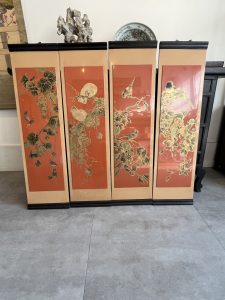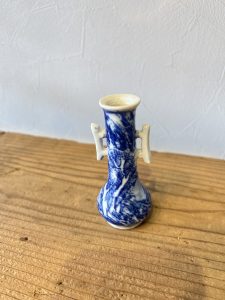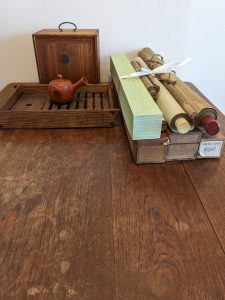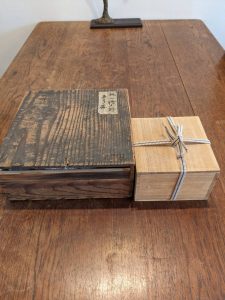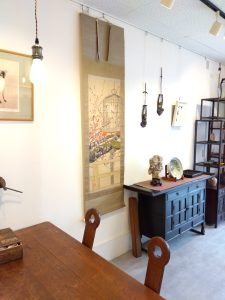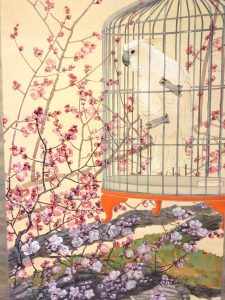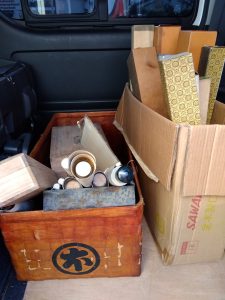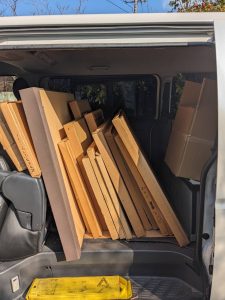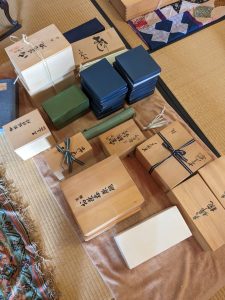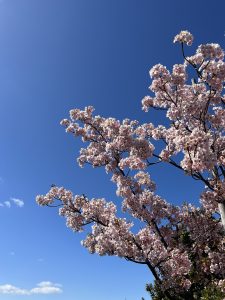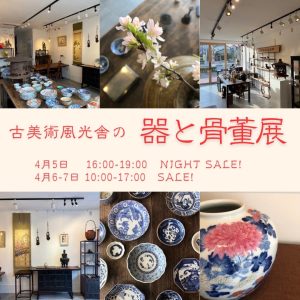皆さまこんにちは。スタッフHでございます。
暖かい春の陽気に足取りも軽くなります。行き交う人々の服装も様々で季節の変わり目を実感いたしました。
先日のスタッフYのブログを読み、私も早咲きの桜に出会えないかと辺りを見回しておりますが、残念ながらまだ遭遇しておりません。
それでも道を歩いていると沢山の春の花が目に飛び込んできて気分も高揚いたします。昔は花を見てこんなにもうれしい気持ちにはならなかったのにと不思議に思います。
近所の桜の名所はまだ蕾が固そうでしたが、代わりに純白のモクレンが美しく咲いておりました。花びらが大きく、一枚一枚が滑らかな布地のように華やかなのですが、一斉に空に向かって咲いている様子には凛とした強さも感じます。
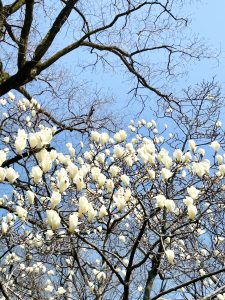
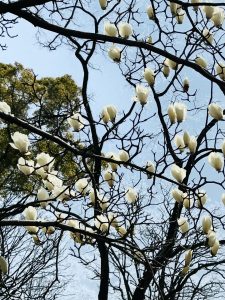
調べてみますとモクレンは地球上で最も最古の花木といわれているとか。
恐竜が闊歩していた白亜紀の地層からモクレンの木の化石が出土しているそうです。はるか1億年以上も前から既に今のような姿だったといわれています。実際、草食恐竜が食べていたことが分かっています。
モクレンの原産地は中国南部で、日本には古くから薬用として伝わりました。花の開く前の蕾を乾燥させたものが辛夷(しんい)と呼ばれ、生薬として鼻炎や頭痛、冷えや気管支炎に効果があるとされています。
恐竜がその効能を知っていたかは不明ですが、トリケラトプスなどの草食恐竜が食べている姿を想像してみると、太古の昔にタイムスリップするようで楽しくなります。
さわやかな香りと大ぶりの花をつけるモクレンには紫の花をつける「紫木蓮」、白い花をつける「白木蓮」があります。名前の由来は諸説あるようで、その姿が蘭の花に似ていることから「木蘭(もくらん)」と呼ばれていたこともあったとか。その後、花が蓮の花を思わせるため中国で「木蓮」と表されていたため、日本でも「モクレン」と呼ばれるようになったなどと言われています。英語名では一般的に「マグノリア」と呼ばれているそうです。マグノリアは映画の題名などで馴染がありますが、モクレンのことだったのですね。
またモクレンは咲いている時の輝くばかりの美しさと、散る時の茶色くなった花の姿が対照的だといわれます。
桜は散り際も鮮やかな色合いのままで、「桜吹雪」と表され、水に浮かぶ姿は「花いかだ」となり人々を楽しませてくれます。梅の花は小さくて丸い花びらが散る様子が、涙がこぼれる様子に似ていることから「梅がごぼれる」という表現もあるそうです。また椿は美しい花の形を残したままポトリと落ちますね。
ではモクレンはどうでしょう。この時期、道に茶色く変色したモクレンが大量に落ちているのを見かけることがあります。落ちる瞬間を見たことはないのですが、噂によると風もないのに何枚もの花びらが一斉に降ってくることがあるそうです。花びらが大きいので「バラバラ」という音がするとか。まるで意思を持っているかのように、一斉に散るところが植物の不思議なところでもあります。散る頃には真っ白だった花びらは茶色に変色し地面に積もっていきます。
もちろん散り際が美しいのは見ていて感動しますが、茶色くなってもなお枝に残り続け、力尽きるように散るモクレンを愛おしく感じるのは、はやり年齢のせいでしょうか。
それでは、また次の機会に。
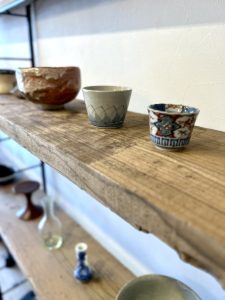
Hello everyone. This is Staff H.
The warm spring weather is making me feel light on my feet. The people who pass by are dressed in different outfits, which reminds me of the change of season.
After reading Staff Y’s blog the other day, I too have been looking around to see if I can come across any early-blooming cherry blossoms, but unfortunately, I have not encountered any yet.
Still, when I walk along the streets, I see many spring flowers and my spirits are lifted. It is strange to think that in the past, seeing flowers did not make me so happy.
The cherry blossoms in my neighborhood were still in their buds, but the pure white magnolias were blooming beautifully instead. The petals are large and each petal is as gorgeous as a smooth fabric, but there is also a sense of dignity and strength in the way they are all blooming toward the sky at once.
I researched and found that magnolias are said to be the oldest flowering trees on the earth.
Fossils of magnolia trees have been excavated from the strata of the Cretaceous Period, when dinosaurs roamed the earth. It is said to have already looked like this more than 100 million years ago. In fact, it is known that herbivorous dinosaurs ate them.
The magnolia originated in southern China and was introduced to Japan for medicinal purposes in ancient times. The dried buds before the flowers open are called “shin-i,” and as a herbal medicine, it is believed to be effective against rhinitis, headaches, cold, and bronchitis.
It is unknown if dinosaurs knew of its efficacy, but imagining herbivorous dinosaurs such as Triceratops eating it is a fun way to travel back in time to ancient times.
There are two types of magnolia with fresh fragrance and large flowers: “purple magnolia,” which has purple flowers, and “white magnolia,” which has white flowers. There are various theories as to the origin of its name. It was once called “magnolia” (mokuran) because of its resemblance to an orchid flower. Later, it was called “magnolia” in China because the flower resembled a lotus flower, and so it came to be called “magnolia” in Japan as well. In English, it is generally called “magnolia. Magnolia” is a familiar name from movie titles, but it is also used to refer to magnolia.
It is also said that the magnolia’s radiant beauty when in bloom contrasts with the browned appearance of its blossoms when they fall.
Cherry blossoms remain vividly colored even when they fall, and are described as a “cherry blossom snowstorm,” and their floating form on the water is called a “flower raft,” which is a delight to people. The small, round petals of the ume (plum) flower fall in a manner similar to tears spilling from the flower, hence the expression “ume ga goboreru” (“plum blossoms spill”). Camellias also fall with their beautiful flowers still intact.
What about magnolias? During this season, you may see a large number of brownish magnolias falling on the road. I have never seen the moment of falling, but rumor has it that many petals sometimes fall at once, even though there is no wind. The petals are so large that they make a “disintegrating” sound. The mysterious thing about plants is that they fall all at once, as if they have a will of their own. By the time they fall, the pure white petals turn brown and pile up on the ground.
Of course, it is moving to see the beauty of the falling petals, but perhaps it is my age that makes me love the magnolias that remain on the branches even after they turn brown and fall as if they are running out of energy.
I will see you next time.
**********************
ご実家の整理やお片付けなどをされている方のご相談などが多くございます。
お片付けなどくれぐれもご無理のないようになさってくださいませ。
風光舎では古美術品や骨董品の他にも絵画や宝石、趣味のお品など様々なジャンルのものを買取しております。
お片付けをされていて、こういうものでもいいのかしらと迷われているものでも、どうぞお気軽にご相談下さいませ。
また風光舎は、出張買取も強化しております。ご近所はもちろん、愛知県内、岐阜県、三重県その他の県へも出張いたします。
まずは、お電話お待ちしております。
愛知県名古屋市千種区姫池通
骨董 買取【古美術 風光舎 名古屋店】
TEL052(734)8444
10:00-18:00 OPEN
#骨董買取#古美術買取#出張買取#無料査定#生前整理#遺品整理#家じまい#実家じまい#掛け軸#絵画#木箱入り茶碗#刀剣#洋食器#貴金属
